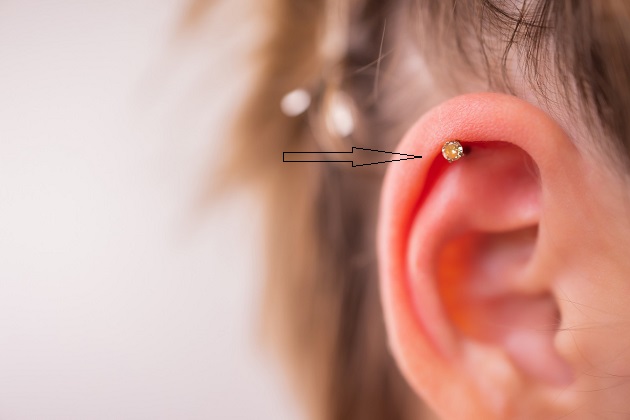Cartilage Piercing
In recent years,
cartilage piercing has become a trendy way for individuals to express their uniqueness and personality.
This type of piercing
involves sticking the cartilage of the ear, creating an opportunity for various
styles and orderings.
The Origins of Cartilage Piercing
The practice of
cartilage piercing can be traced back centuries, with evidence of its existence
in ancient cultures across the globe.
From the Middle East
to Asia, cartilage piercings were often seen as
symbols of status, beauty, or spiritual significance. Today, this ancient art
has evolved into a form of self-expression, with people opting for various
cartilage piercings to showcase their individuality.
Types of Cartilage Piercings
Cartilage piercings
offer a wide range of possibilities, allowing individuals to adorn their ears
in unique and creative ways.
Some popular types of
cartilage piercings include:
- Helix Piercing: The helix, the upper curved part of the
ear, is a common location for cartilage piercing. It can be decorated with
a single stud or a cluster of rings for a stylish look.
- Tragus Piercing: Located at the small, protruding cartilage near the ear canal, tragus piercing is a bold choice that can be decorated with tiny hoops or barbells.
- Daith Piercing: Set at the innermost fold
of the cartilage, daith piercings have gained popularity for
their unique and aesthetic appeal.
- Rook Piercing: Placed above the daith,
the rook piercing adds a touch of edginess and
is often adorned with intricate jewelry.
Procedure: What to Expect
Before getting a
cartilage piercing, it's essential to understand the procedure and what to
expect.
Professional piercers follow a strict
protocol to ensure safety and minimize discomfort for their clients.
The process involves
the following steps:
- Consultation: The piercer will discuss the preferred type of cartilage piercing, placement, and appropriate jewelry options based on individual preferences.
- Sterilization: The piercer will cleanse
the area thoroughly and use sterilized equipment to minimize the risk of
infection.
- Piercing: Using a hollow needle,
the piercer will carefully create the opening for the jewelry to be inserted.
- Jewelry Placement: Once the piercing is
complete, the chosen jewelry will be inserted into the hole.
Keeping Your Piercing Happy and Healthy
Proper aftercare is
essential for the healing process and to prevent infections or complications.
Some essential aftercare tips include:
- Gentle Cleaning: Clean the piercing with
saline solution or mild soap twice a day to remove debris and promote healing.
- Hands Off Policy: Avoid touching the new
piercing with unwashed hands to prevent infections.
- Avoid Irritants: Refrain from using hair
products or cosmetics that may irritate the piercing site.
- Avoid Changing Jewelry Too
Soon: Allow
the piercing to heal completely before changing jewelry to avoid irritation.
Debunking Myths about Cartilage Piercing
Over time, various
myths and misconceptions have emerged around cartilage piercing. Let's debunk
some of the most common ones:
- Extremely Painful: While pain thresholds
vary among individuals, cartilage piercings are generally no more painful
than other types of piercings.
- Infected: With proper aftercare, cartilage piercings are unlikely to get infected. Following the piercer's instructions can minimize this risk.
- Cartilage Piercings to Heal: Cartilage piercings may
take slightly longer to heal than earlobe piercings, but with appropriate
care, healing time can be expedited.
Bottom lines
Cartilage piercing as
a means of self-expression.
It restates that this
form of body modification allows individuals to showcase their unique style and
personality.
The practice of
cartilage piercing has a rich history, tracing back to ancient civilizations where it held
significance as symbol of beauty, status, or spiritual meaning.
It advises consulting
a professional piercer and following proper aftercare guidelines to ensure a
safe and successful piercing experience.
To avoid potential complications, infections, or
discomfort during the healing process.
This article addresses
some common myths surrounding cartilage piercing.
It debunks
misconceptions such as extreme pain, frequent infections, and prolonged healing
time.
By doing so, it aims
to reassure readers and dispel any unfounded fears they may have about this
type of piercing.
The article concludes
by reiterating the significance of proper aftercare to promote healing and
minimize potential risks.
This ensures that individuals can enjoy their new cartilage piercing comfortably and confidently, embracing their own unique sense of style and self-expression.












0 Comments